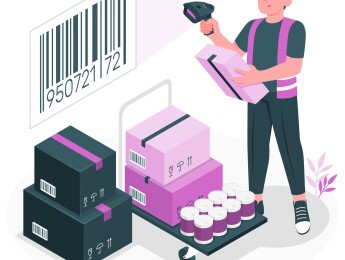- Table of Contents
- Unveiling Consumer Behaviour
- Psychological Factors
- Social Influences
- Situational Factors
- The Far-Reaching Effects of Consumer Behaviour on Marketing Strategies
- Tailoring Product Development
- Segmentation and Targeting
- Communication and Branding
- Pricing Strategies
- Promotion and Advertising
- The Bidirectional Influence: How Marketing Strategies Shape Consumer Behaviour
- Creating Perceived Needs
- Shaping Social Norms
- Cultivating Brand Loyalty
- Framing Choices
- Urgency and Scarcity
- The Role of Technology in Understanding and Influencing Consumer Behaviour
- Cultural Shifts and Consumer Behaviour
- Conclusion
Understanding the intricate relationship between consumer behaviour and marketing strategies is pivotal for businesses aiming to create successful campaigns and foster lasting customer relationships. Consumer behaviour, the dynamic interplay of thoughts, emotions, and actions that guide purchasing decisions, serves as a cornerstone for marketing initiatives. This blog post delves deep into the essence of consumer behaviour, explores its profound effects on marketing strategies, and highlights the reciprocal influence between marketing approaches and consumer factions.
Unveiling Consumer Behaviour
Consumer behaviour is a complex amalgamation of psychological, social, and situational factors that influence how individuals perceive, choose, and interact with products and services. It's the sum of personal preferences, cultural influences, past experiences, and economic considerations, all of which intertwine to shape purchasing decisions. At its core, consumer behaviour examines why people buy, what drives their choices, and how external stimuli influence these choices.
Psychological Factors
At the heart of consumer behaviour lies the fascinating realm of psychology, where the cognitive processes governing purchase decisions are explored. Perception, a cornerstone of psychological factors, is scrutinised in detail. It's not merely about what consumers see but how they interpret and make sense of stimuli. For instance, the choice of colours, fonts, and visuals in advertisements isn't arbitrary; it's a strategic effort to elicit specific emotional responses and influence consumer perceptions. Understanding these subtleties provides marketers with a powerful tool to craft messages that resonate deeply with their audience.
Moreover, delving into the psychological landscape involves unravelling the motivations and triggers that drive consumer choices. Why do individuals prefer certain features in a product? How do emotions influence decision-making? By deciphering these aspects, businesses gain a profound understanding of the underlying drivers that steer consumers towards or away from a particular offering.
Social Influences
Humans are inherently social beings, and their purchasing decisions are intricately interwoven with the fabric of society. Social influences play a pivotal role, shaping consumer behaviour in ways both overt and subtle. The phenomenon of social proof takes centre stage, highlighting the tendency of individuals to follow the actions of others when uncertain about their decisions. This dynamic is the backbone of customer reviews, testimonials, and influencer endorsements.
Exploring social influences involves understanding not only the impact of peer groups but also the broader societal trends and cultural norms that shape consumer choices. Marketers need to be attuned to the ever-evolving nature of societal expectations, recognising that consumer behaviour is not static but a dynamic dance influenced by the collective choices of the community.
Situational Factors
Consumer decisions are not made in isolation but are profoundly affected by the context in which they occur. Situational factors encompass a broad spectrum, including time constraints, geographical considerations, and immediate needs. Consider the influence of limited-time offers or flash sales – they create a sense of urgency that prompts consumers to act quickly, leveraging the psychology of scarcity.
Understanding situational factors requires businesses to view consumer behaviour through a contextual kaleidoscope. How does the time of day impact purchasing decisions? What role does the physical environment play in shaping preferences? By answering these questions, businesses can tailor their strategies to align with the situational contexts in which consumers find themselves.
In essence, unveiling consumer behaviour goes beyond surface-level observations; it involves a deep dive into the intricate tapestry of psychology, the power of social dynamics, and the contextual nuances that shape choices. Businesses that master the art of unravelling these layers gain a competitive edge in creating campaigns that not only attract attention but also resonate on a profound level with their target audience.
The Far-Reaching Effects of Consumer Behaviour on Marketing Strategies
Consumer behaviour is like a treasure trove of insights that businesses can tap into to create more effective marketing strategies. The ripple effects of understanding consumer behaviour are profound and extend across various dimensions of marketing. Let's delve deeper into how these insights shape key aspects of marketing strategies:
Tailoring Product Development
Consumer behaviour insights provide a compass that guides product development efforts. The days of creating products in isolation, without considering the end-users' needs and preferences, are long gone. Modern businesses recognise that success hinges on offering products that genuinely resonate with consumers. By studying consumer behaviour, companies gain an understanding of pain points, unmet needs, and latent desires.
Consider the example of a tech company designing a new smartphone. Through consumer behaviour research, they might discover that users increasingly prioritise camera quality for social media content creation. Armed with this knowledge, the company can focus on enhancing camera features, aligning the product with consumer expectations. This not only ensures that the product meets customer needs but also increases the likelihood of capturing a larger market share.
Segmentation and Targeting
A one-size-fits-all approach to marketing is a relic of the past. The modern landscape demands a nuanced understanding of diverse consumer segments. Consumer behaviour insights facilitate the segmentation process by identifying distinct groups of consumers based on shared characteristics, preferences, and behaviours.
Let's consider a fashion retailer aiming to market a new line of clothing. Through consumer behaviour analysis, they discern that they have two primary segments: young professionals seeking trendy yet affordable outfits and older consumers who prioritise comfort and timeless styles. Armed with this knowledge, the retailer tailors its marketing messages and promotional activities to appeal to each group's unique motivations. The result? More resonant communication that bolsters engagement and conversion rates.
Communication and Branding
Consumer behaviour insights hold the key to effective communication and branding strategies. Successful brands understand that their messages must align with consumers' values, aspirations, and emotions. By deciphering what resonates with their audience, brands can craft narratives that evoke strong connections.
Imagine a brand focusing on eco-friendly products. Through consumer behaviour research, they ascertain that their target audience values sustainability and seeks to make environmentally conscious choices. Armed with this insight, the brand crafts its messaging to highlight the positive impact of their products on the planet. This approach not only attracts environmentally conscious consumers but also positions the brand as an ally in the pursuit of a sustainable lifestyle.
Pricing Strategies
Pricing is a delicate dance that balances perceived value with consumer expectations. Consumer behaviour insights unveil the psychological underpinnings of pricing decisions. Understanding how consumers perceive value, make trade-offs, and respond to different price points empowers businesses to set prices that resonate with their audience.
Consider a premium skincare brand. By analysing consumer behaviour, they discover that their target audience equates higher prices with superior quality and exclusivity. Armed with this understanding, the brand strategically prices its products at a premium level. This pricing strategy aligns with consumer perceptions, reinforcing the brand's position as a luxury skincare provider and justifying the higher costs.
Promotion and Advertising
Effective promotion and advertising hinge on consumer behaviour insights. The most persuasive messages are those that tap into consumers' desires, aspirations, and pain points. By understanding the triggers that prompt action, businesses can design campaigns that strike a chord with their audience.
Imagine a restaurant launching a new menu. Through consumer behaviour analysis, they unearth that their patrons value experiences that cater to diverse tastes and dietary restrictions. Armed with this insight, the restaurant crafts a campaign highlighting the menu's range of options, ensuring that each diner feels seen and catered to. This approach resonates with patrons, driving higher footfall and increased patronage.
In essence, consumer behaviour is the compass that guides every facet of marketing strategy. From product development and segmentation to communication and pricing, these insights offer a panoramic view of what makes consumers tick. Armed with this knowledge, businesses can navigate the complex landscape of consumer preferences, forging deeper connections and fostering brand loyalty. The symbiotic relationship between consumer behaviour and marketing strategies is an ever-evolving partnership that holds the key to enduring business success.
The Bidirectional Influence: How Marketing Strategies Shape Consumer Behaviour
While consumer behaviour undoubtedly informs marketing strategies, the reverse is also true – marketing strategies can actively influence consumer behaviour. Let's explore how this dynamic interaction unfolds:
Creating Perceived Needs
Successful marketing has the transformative power to create perceived needs or wants among consumers. The launch of innovative products or the introduction of novel features often leads to consumers realising a need they didn't know existed. This phenomenon is at the core of how marketing strategies can actively shape the way consumers perceive and articulate their desires.
Consider the evolution of smartphones. Marketing strategies have not only informed consumers about the capabilities of these devices but have also shaped the way people view them. From being simple communication tools, smartphones are now perceived as indispensable tools for various aspects of life, from work to entertainment and beyond. Marketing, through its ability to highlight features and benefits, actively influences consumers to recognise and desire these newfound needs.
Shaping Social Norms
Marketing has the power to redefine social norms and expectations. Advertisements that challenge stereotypes, promote inclusivity, or advocate for certain values can influence how consumers perceive certain groups and can lead to more conscious consumption choices. In this way, marketing strategies become a force for societal change, actively participating in the formation of cultural expectations.
For example, campaigns that celebrate body positivity or challenge traditional gender roles not only resonate with consumers but also contribute to a shift in societal norms. As consumers identify with these messages, they are more likely to make choices that align with the values presented in the marketing campaigns, thereby actively shaping their own behaviour.
Cultivating Brand Loyalty
Thoughtful marketing strategies play a pivotal role in fostering brand loyalty. Loyalty programs, personalised recommendations, and engaging content create a sense of attachment that goes beyond a mere transactional relationship. In fact, statistics show that the experience a company offers is deemed equally crucial as its products and services by a staggering 80% of consumers. The goal is to turn occasional buyers into repeat customers who actively seek out and prefer a particular brand.
Loyalty programs are a prime example of this bidirectional influence. Through rewards, exclusive offers, and personalised experiences, marketing strategies actively shape consumers' emotional connections to a brand. Simultaneously, consumers who actively participate in these loyalty programs find their preferences and purchasing behaviour influenced by the incentives and benefits provided by the brand.
Framing Choices
The way choices are presented in marketing materials can significantly impact consumer decisions. Through techniques like framing, where options are presented in a way that highlights their benefits, marketers can nudge consumers toward certain choices. This subtle yet powerful influence on decision-making dynamics is a key aspect of how marketing actively shapes consumer behaviour.
Consider a marketing campaign for a health food product. By framing the product as a tasty and convenient alternative rather than a restrictive diet item, marketers can influence consumers to perceive the choice as positive and enjoyable. This framing not only impacts immediate purchase decisions but can also contribute to long-term changes in consumer preferences and habits.
Urgency and Scarcity
Marketing strategies often incorporate elements of urgency and scarcity to prompt immediate action. Limited-time offers, phrases like "while supplies last," or exclusive deals tap into consumers' fear of missing out, influencing them to make quicker purchasing decisions. This sense of urgency becomes a potent tool for shaping consumer behaviour in the short term.
For example, an e-commerce platform employing flash sales creates a sense of urgency among consumers, driving them to make impulsive buying decisions. This not only boosts immediate sales but also conditions consumers to respond promptly to future marketing messages that emphasise scarcity or time-sensitive offers.
The intricate dance between marketing strategies and consumer behaviour forms the foundation of successful business endeavours. As businesses recognise the bidirectional influence at play, they gain a nuanced understanding of how to navigate and leverage this dynamic relationship. This reciprocal dance equips businesses with the tools needed to not only adapt to changing consumer preferences but actively participate in shaping them.
Understanding the bidirectional influence between marketing strategies and consumer behaviour is not just a strategic advantage; it's a key element of building enduring brand-consumer connections. As businesses continue to refine their approaches, recognising the symbiotic nature of this relationship becomes paramount for sustained success in the dynamic world of commerce.
The Role of Technology in Understanding and Influencing Consumer Behaviour
In the digital age, technology has become an indispensable tool for understanding and influencing consumer behaviour. Advanced analytics tools sift through vast datasets, providing businesses with granular insights into consumer preferences, online behaviours, and purchase patterns. Machine learning algorithms can predict future trends, allowing businesses to stay one step ahead in adapting their marketing strategies.
Table 1: Technological Advancements and Marketing
Technology | Impact on Consumer Behavior | Implications for Marketing |
Big Data Analytics | Personalised recommendations, insights | Tailor content, predict trends, refine marketing |
Social Media | Immediate feedback, influencer impact | Utilise real-time data, engage influencers strategically |
Augmented Reality | Immersive experiences, enhanced visuals | Create interactive campaigns, virtual try-on features |
Chatbots | Instant customer support, 24/7 service | Improve customer service, automate routine interactions |
Artificial Intelligence | Predictive analytics, personalised experiences | Refine targeting, enhance customer journey |
Moreover, the rise of social media platforms has transformed the way consumers interact with brands. The immediacy of feedback, the viral nature of content, and the ability to engage directly with consumers have created new avenues for understanding and influencing consumer behaviour. Smart marketers leveragesocial listening tools to tap into real-time conversations, gaining invaluable insights into emerging trends and sentiments. The integration of augmented reality (AR) and virtual reality (VR) in marketing further enhances the consumer experience, creating immersive environments that directly impact purchasing decisions. As technology continues to evolve, businesses that embrace these tools gain a competitive edge in navigating the ever-shifting landscape of consumer behaviour.
Cultural Shifts and Consumer Behaviour
Consumer behaviour is not static; it evolves with cultural shifts, societal changes, and emerging trends. Understanding these shifts is crucial for businesses aiming to stay relevant and resonate with their target audience. For instance, the growing emphasis on sustainability and ethical consumption has led to a surge in demand for eco-friendly products. Businesses that align their marketing strategies with these cultural shifts, emphasising their commitment to environmental responsibility, not only attract conscious consumers but also contribute to positive brand perception.
Furthermore, the influence of cultural phenomena on consumer behaviour is evident in the rise of influencer marketing. Social media influencers have become powerful voices shaping consumer opinions and preferences. Businesses leverage these influencers to connect with specific demographics, relying on the influencers' ability to authentically communicate messages to their followers.
As cultural dynamics continue to shape consumer behaviour, businesses need to stay attuned to societal trends, engage in ongoing consumer research, and be agile in adapting their marketing strategies to reflect these cultural shifts. By doing so, they position themselves not just as sellers of products but as active participants in the cultural conversation, fostering deeper connections with their audience.
Conclusion
The intricate dance between consumer behaviour and marketing strategies forms the bedrock of successful business endeavours. By delving into the psychological, social, and situational aspects of consumer behaviour, marketers can uncover insights that shape their strategies. Simultaneously, these strategies have the power to mould consumer behaviour by creating needs, shifting norms, and fostering loyalty. Recognising and harnessing this reciprocal relationship equips businesses with the tools needed to navigate the ever-evolving landscape of consumer preferences and build enduring brand-consumer connections.
As you unravel the layers of the symbiotic relationship between consumer behaviour and marketing strategies, make sure to check out our course, ‘Mastering Business to Business Marketing.’ This course will equip you with the tools and insights needed to navigate the complex terrain of consumer behaviour and harness it to drive impactful marketing strategies for your business. Don’t miss out and secure your spot now.
























